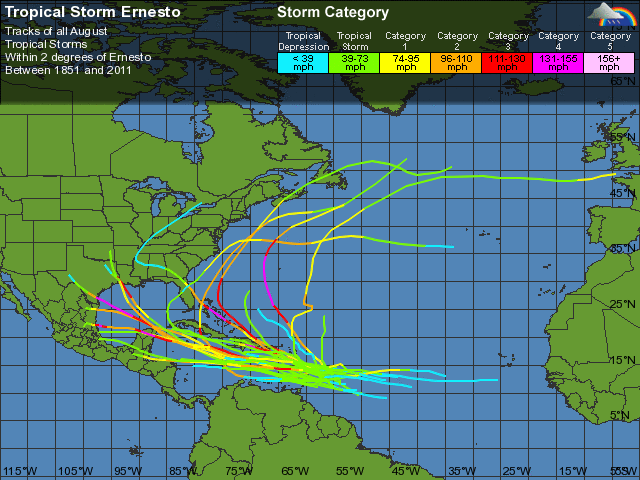Shuriken wrote:An anticyclone aloft is certainly conducive, but, IMO, it's not the critical factor. I have watched a LOT of early-season whirls find themselves in ideal conditions near the Caribbean, but still refuse to develop. In contrast, I have seen storms in mediocre low/mid-level environments power up due to being able to effectively "clear the pipe" all the way to 70,000ft -- Hurricane Gustav is the arch-typrical example here: a storm which went from TS to 150 in less that 48hrs despite strong southwesterly shear in the mid-layers, catching everyone with their pants down.
Earnesto is clearly having trouble in this regard -- a good sized system with a well-developed LLC , but no really cold cloud-tops. If it doesn't develop a bright red meatball on the Rainbow IR tonight, my hunch is it'll be weaker tomorrow that it is today.
Gustav really was an amazing storm, although it's generally more of an anomaly in that sense. The point I was making was that high pressure aloft is actually a favorable condition for strengthening, as opposed to low pressure. Storms under anticyclones can end up in very low shear environments, and with other conditions conducive, can completely take off. You are right though that they are not the only factor. SAL, proximity to land, storm velocity relative to its environment and water temps all can affect storm intensity. There is no one all-important factor in getting a really big one, but most if not all of these factors need to be conducive.













